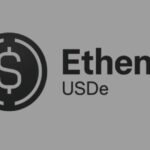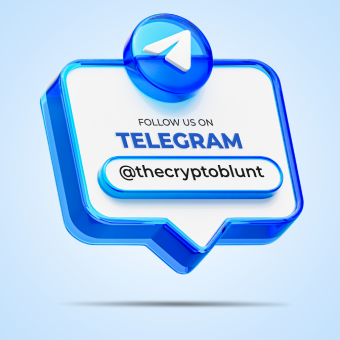Official backing for Solana’s Saga phone is concluding, two years after its highly publicized launch, while other crypto-focused mobile devices are not experiencing significantly better outcomes.
Software and security assistance for the inaugural Saga phone has been discontinued by Solana Mobile, discreetly terminating the gadget’s operational phase slightly more than two years following its May 2023 launch and leaving approximately 20,000 operational devices without subsequent enhancements.
The mobile device, which was promoted based on an integrated Seed Vault, temporarily garnered widespread notice when memecoin distributions rendered its pre-installed digital wallets remarkably valuable.
Notwithstanding the early excitement, the initial demand never aligned with the producers’ expectations: the Saga was introduced at approximately $1,000 and, merely four months subsequent to its release, was reduced to around $599 as purchases diminished. The smartphone was evaluated at that juncture.
It was even criticized by YouTuber Marques Brownlee, who commands more than 20 million subscribers and possesses a history of assessing Apple and Microsoft premium models, as a “failure of 2023.”
Solana Mobile Shifts Focus to Seeker as Saga Support Ends Amid Struggling Crypto Phone Market
The focus of Solana Mobile is now being shifted to its subsequent-generation device, the Seeker, since assistance for the Saga has concluded; the Seeker commenced dispatching earlier this August as a more economical and readily available replacement.
A request for commentary was not answered by Solana Labs .
The remainder of the crypto-focused mobile sector is not experiencing notably superior results. JamboPhone, which is backed by both Aptos and Sei, targeted cost-effectiveness with a $99 retail cost and a pre-installed Web3 software collection.
“Priced at just $99 and already available in over 40 countries, the JamboPhone is more than a device; it’s a bridge to the Aptos ecosystem, seamlessly integrated through pre-installed applications such as Petra, a leading Aptos-compatible wallet, and the Jambo App,”
the Aptos Foundation wrote in a February 2024 blog post.
Introduced in 2023, the mobile device is powered by Unisoc’s T606 chip containing two older A75 core units and six less robust A55s, a configuration which was denounced by critics as tardy and obsolete.
“[…] the A75 big core is already at the level of a small core in the Snapdragon 690, a mid-to-low-end chip released by Qualcomm in 2020. The performance level that was barely acceptable eight years ago is now a disaster,”
BlockBeats wrote in a review.
A comparable scenario was depicted by consumer input, which was citing sluggish operation, frail structure, and negligible post-purchase assistance.
“Software is glitchy. It runs stock Android, but the performance is like a 5-year-old phone. UI lags, apps freeze, not what you’d expect in the current smartphone era,”
one customer wrote.
In contrast to the Saga, Jambo’s software is still receiving updates—the most recent iteration of the Jambo application was released on Oct. 14—but the problems have not ceased to accumulate. On the application’s Google Play page, complaints regarding insufficient airdrop incentives, unhelpful customer assistance, and regional limitations on redeeming benefits are expressed by users.
After $30 million in Series A capital was secured from Paradigm, Pantera Capital, Coinbase Ventures, OKX Ventures, and others, the Jambo Labs crew proceeded to introduce the initiative’s proprietary J token.
The J token, which was marketed as the indigenous asset that “ties together the Jambo ecosystem,” has lost in excess of 94% of its valuation since its debut in February, based on information from CoinGecko.
The JamboPhone 2 was introduced by developers, shortly after the debut of the original JamboPhone, with an emphasis on Solana.
An attempt to contact Jambo Labs was made , but no reply was received.
The Value of Web3
A more expensive route was chosen by the Binance-supported CoralApp. The initiative was fostered in Binance Labs’ Season 4 program as a “fitness platform and marketplace that is constructed on blockchain technology.”
Despite the fact that the CoralPhone, which was introduced in 2024, was never formally designated by CoralApp as a BNB-centric gadget, it was widely publicized as such by the Binance community. Restricted “early-bird” categories were offered to initial purchasers, with reports suggesting the cost was approximately 1,500 USDT.
A Snapdragon-grade processor, a 120 Hz AMOLED screen, and a 50 MP primary lens are indicated by the CoralPhone specifications. These features are considered competent but not equivalent to the newest Apple gadgets.
For comparison purposes, even Apple’s iPhone 17 Pro Max is commencing at 1,199 for the 256 GB entry-level version and extending toward $1,999 for the premium 2 TB alternative, meaning the initial cost of CoralPhone at around $1,500 would be situated roughly $300 higher than the fundamental Apple model.
Even though a dispatch of over 10,000 units is claimed by the group, that particular number could not be verified independently . A communication attempt was also made by to the CoralApp personnel, but no reply was obtained.
Therefore, while crypto mobile devices persist in vowing a decentralized technological future, it has thus far only been demonstrated by them that airdrop giveaways do not construct supportive environments and fervor does not remedy operating software.















